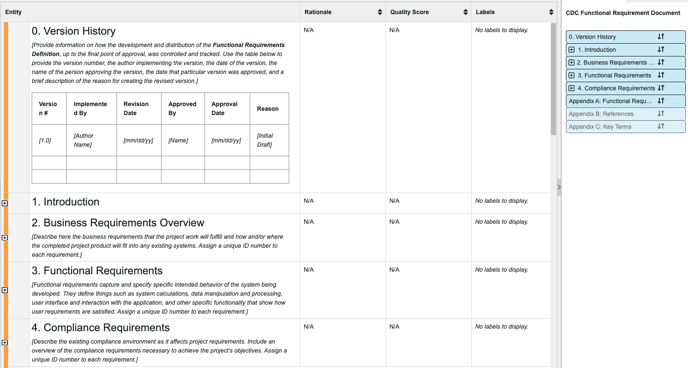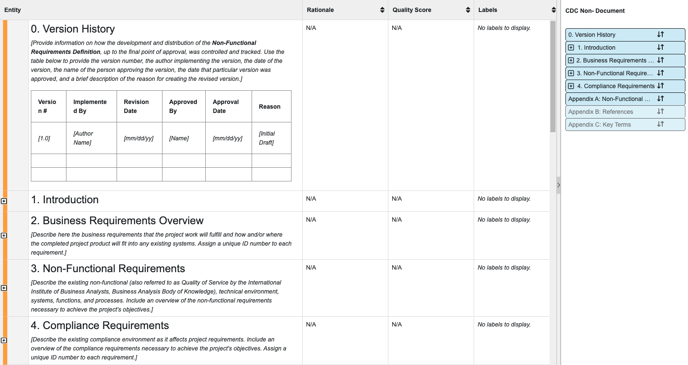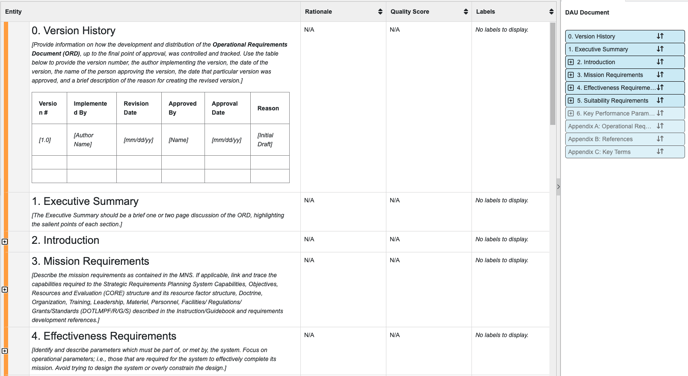Requirements Document
Understand the Requirement Document's purpose and usability on Innoslate
The Requirements Document on Innoslate is one of seven document types that can be used in documents view. Requirements Document is an integral tool in the field of systems engineering, project management, and beyond. Its main purpose is to clearly define the conditions or capabilities that a system or system component must have. This article will discuss the purpose of the Requirements Document Type on Innoslate and the available template options in Innoslate's Documents view.
Understanding the Requirements Document Type
The Requirements Document Type is vital to any project for several reasons:
-
Clarification of Expectations: It clearly outlines what is expected from a specific system, reducing ambiguity and misunderstandings.
-
Facilitation of Communication: It assists in communication between stakeholders, enabling everyone to work toward the same goals.
-
Providing a Basis for Validation: It serves as a benchmark for system validation and acceptance, ensuring that the completed system meets the initially agreed-upon requirements.
-
Guide for Further Development: It acts as a roadmap for system designers and developers, outlining the steps and processes necessary for system development.
The purpose of a requirements document is to define and document the specific needs, expectations, and constraints of a project or system.
Template Options in Innoslate's Documents View
Innoslate's Documents view provides a range of pre-formatted templates to aid users in creating a requirements document. These include:
1. CDC Functional Requirements Definition: This template focuses on the functional requirements of a system, detailing what the system should do or perform. It emphasizes the capabilities and features of the system and their interactions.

2. CDC Non-Functional Requirements Definition: This template is designed to handle non-functional requirements, which specify how the system should behave. These requirements often relate to system performance, reliability, security, usability, and other quality attributes.

3. DAU Operational Requirements Document: This template follows the Defense Acquisition University's guidelines for documenting operational requirements. It is suitable for projects within the defense sector, providing sections to detail system capabilities, operational effectiveness, and operational suitability, among others.

Each template includes unique formatting and information specialized to the formatting necessary. With the help of the pre-formatted templates available in Innoslate's Documents view, users can efficiently outline their project requirements, allowing users for ease of work and proper use of requirements documents, given the standardized templates.
To continue learning about Documents View, Click Here.
(Next Article: Concept of Operations Document)
